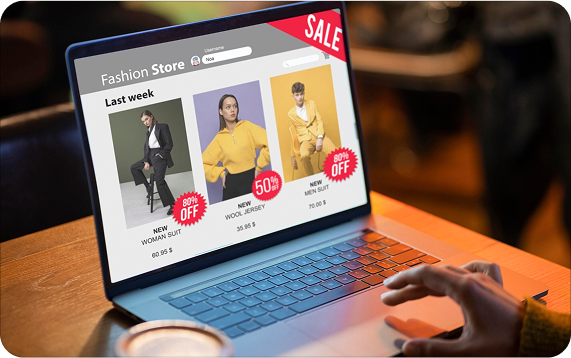How AEPS is Transforming Rural Banking in 2025

How to Craft a Powerful Brand Identity for Your Digital Product
A strong brand identity is the backbone of any successful digital product. It’s more than just a logo or color scheme—it’s the personality, voice, and emotional connection that users associate with your product. Whether you're launching a mobile app, SaaS platform, or e-commerce store, a well-defined brand identity helps you stand out, build trust, and foster loyalty.
Why Brand Identity Matters for Digital Products
In a crowded digital market, users form quick judgments. A cohesive brand identity:
- Builds recognition (think of Slack’s vibrant colors or Apple’s minimalist design)
- Creates trust and professionalism
- Improves user experience (UX) and engagement
- Sets you apart from competitors
Key Elements of a Digital Brand Identity
- Logo & Visual Design
- Simple & scalable (works on apps, websites, and social media)
- Memorable (like Twitter’s bird or Nike’s swoosh)
- Reflective of your brand’s personality (playful, professional, or futuristic)
- Pro Tip: Use a consistent color palette (e.g., Spotify’s green) and typography (like Google’s clean sans-serif fonts).
- Tone of Voice & Messaging
- Friendly & casual (Mailchimp)
- Professional & authoritative (HubSpot)
- Innovative & bold (Tesla)
- Example: Duolingo’s playful tone makes learning fun, while Dropbox keeps it simple and professional.
- User Experience (UX) & Interface (UI) Design
- Intuitive navigation (like Airbnb’s clean layout)
- Consistent buttons, icons, and animations
- Emotional design elements (e.g., celebratory animations when a user completes a task)
- Brand Values & Personality
- Apple: Innovation & Simplicity
- Spotify: Music Discovery & Personalization
- Notion: Productivity & Creativity
How to Build Your Digital Brand Identity (Step-by-Step)
- Define Your Brand Strategy
- Mission & Vision: Why does your product exist?
- Target Audience: Who are you designing for?
- Unique Selling Proposition (USP): What makes you different?
- Design Your Visual Identity
- Create a logo (use tools like Canva or hire a designer)
- Choose brand colors & fonts (Adobe Color is great for palettes)
- Develop UI components (buttons, icons, illustrations)
- Craft Your Brand Voice
- Write a style guide (formal vs. casual, emoji usage, etc.)
- Train your team (customer support, marketing, and devs should align)
- Test & Refine
- Gather user feedback (A/B test logos, colors, and messaging)
- Ensure consistency across all platforms (app, website, social media)
Great Examples of Digital Branding
- ✅ Slack – Fun, collaborative, and instantly recognizable
- ✅ Figma – Clean, creative, and community-driven
- ✅ Discord – Youthful, gamer-friendly, and bold

Why Brand Identity Matters for Digital Products
A strong brand identity is the backbone of any successful digital product. It’s more than just a logo or color scheme—it’s the personality, voice, and emotional connection that users associate with your product. Whether you're launching a mobile app, SaaS platform, or e-commerce store, a well-defined brand identity helps you stand out, build trust, and foster loyalty.
Why Brand Identity Matters for Digital Products
In a crowded digital market, users form quick judgments. A cohesive brand identity:
- Builds recognition (think of Slack’s vibrant colors or Apple’s minimalist design)
- Creates trust and professionalism
- Improves user experience (UX) and engagement
- Sets you apart from competitors
Logo & Visual Design
- Logo & Visual Design
- Simple & scalable (works on apps, websites, and social media)
- Memorable (like Twitter’s bird or Nike’s swoosh)
- Reflective of your brand’s personality (playful, professional, or futuristic)
- Pro Tip: Use a consistent color palette (e.g., Spotify’s green) and typography (like Google’s clean sans-serif fonts).
- Tone of Voice & Messaging
- Friendly & casual (Mailchimp)
- Professional & authoritative (HubSpot)
- Innovative & bold (Tesla)
- Example: Duolingo’s playful tone makes learning fun, while Dropbox keeps it simple and professional.
- User Experience (UX) & Interface (UI) Design
- Intuitive navigation (like Airbnb’s clean layout)
- Consistent buttons, icons, and animations
- Emotional design elements (e.g., celebratory animations when a user completes a task)
- Brand Values & Personality
- Apple: Innovation & Simplicity
- Spotify: Music Discovery & Personalization
- Notion: Productivity & Creativity
Ensure consistency across all platforms
- ✅ Slack – Fun, collaborative, and instantly recognizable
- ✅ Figma – Clean, creative, and community-driven
- ✅ Discord – Youthful, gamer-friendly, and bold
Final Thoughts
A strong brand identity isn’t built overnight—it evolves with your product. By focusing on visuals, voice, UX, and values, you’ll create a digital brand that users remember, trust, and love.
Need help branding your digital product? Start small, stay consistent, and keep refining! 🚀

